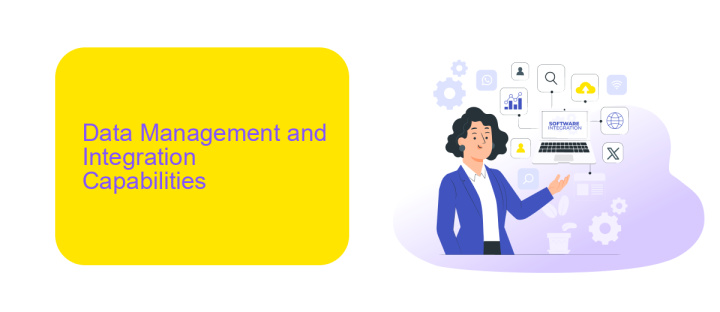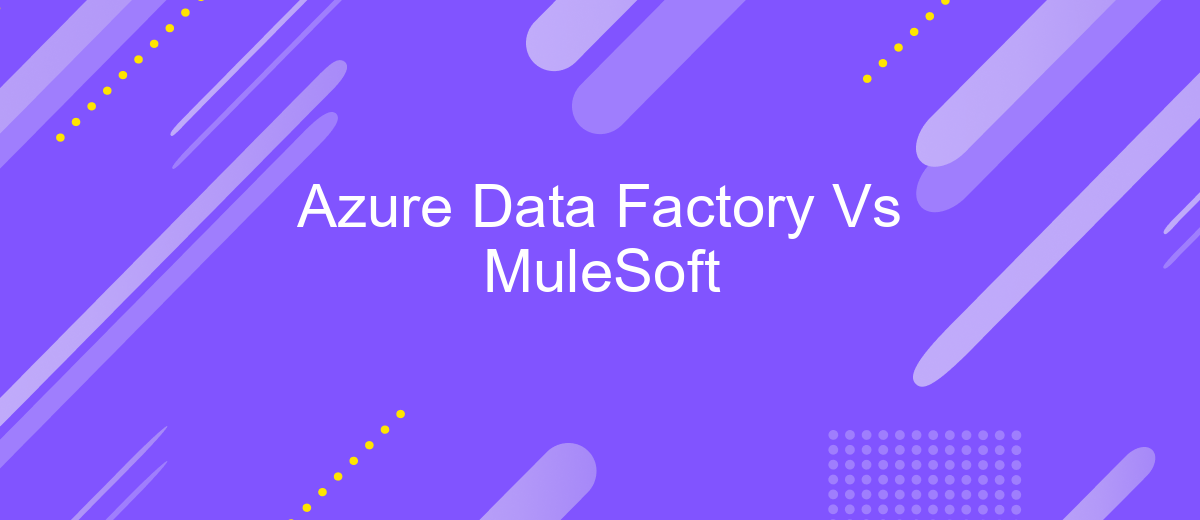Azure Data Factory Vs MuleSoft
When it comes to modern data integration and automation, Azure Data Factory and MuleSoft stand out as two leading platforms. Each offers unique features and capabilities tailored to different business needs. This article delves into a comparative analysis of Azure Data Factory and MuleSoft, examining their strengths, weaknesses, and ideal use cases to help you make an informed decision.
Introduction
In today's fast-paced digital landscape, businesses are increasingly relying on robust data integration platforms to streamline their operations and enhance data-driven decision-making. Azure Data Factory and MuleSoft are two leading solutions in this domain, each offering unique features and capabilities.
- Azure Data Factory: A cloud-based data integration service that allows you to create, schedule, and orchestrate data workflows.
- MuleSoft: An integration platform that enables businesses to connect applications, data, and devices both on-premises and in the cloud.
Choosing the right data integration tool is crucial for optimizing workflows and ensuring seamless data connectivity. While Azure Data Factory excels in cloud-based data orchestration, MuleSoft offers extensive API management and connectivity options. Additionally, services like ApiX-Drive can further simplify the integration process by providing user-friendly interfaces for setting up automated data transfers between various systems.
Data Management and Integration Capabilities

Azure Data Factory (ADF) excels in data management and integration capabilities by providing a robust platform for orchestrating data workflows. It allows users to create, schedule, and manage data pipelines that can ingest data from various sources and transform it according to business needs. ADF supports a wide range of data connectors, making it easy to integrate with different data stores, cloud services, and on-premises systems. Additionally, its integration with Azure Machine Learning and other Azure services enhances its data processing and analytics capabilities, offering a comprehensive solution for data-driven enterprises.
On the other hand, MuleSoft provides a powerful integration platform that facilitates seamless connectivity between applications, data, and devices. With its Anypoint Platform, MuleSoft enables users to design, build, and manage APIs and integrations with ease. It supports a broad spectrum of connectors and offers tools for API management, making it an excellent choice for organizations looking to streamline their integration processes. For those seeking an efficient way to set up integrations without extensive coding, services like ApiX-Drive can complement MuleSoft by automating data transfers and synchronizations across various platforms, thus enhancing overall productivity and efficiency.
Data Transformation and Manipulation

Data transformation and manipulation are critical components in any data integration process, ensuring that data is cleaned, formatted, and made usable for downstream applications. Azure Data Factory (ADF) and MuleSoft offer robust capabilities for these tasks, but they approach them differently.
- Azure Data Factory: ADF provides a rich set of data transformation activities through its Mapping Data Flows feature. Users can design visually complex data transformations without writing code, leveraging built-in functions for data cleansing, aggregation, and more.
- MuleSoft: MuleSoft's DataWeave is a powerful language designed for transforming data. It allows for intricate data manipulation through a combination of functional programming and JSON-like syntax, offering fine-grained control over the data transformation process.
In addition to these platforms, tools like ApiX-Drive can further simplify the integration process by providing pre-built connectors and automated workflows, making it easier to integrate disparate systems without extensive coding. Whether you choose ADF or MuleSoft, understanding the strengths of each tool in data transformation can significantly enhance your data integration strategy.
Cloud Integration and Connectivity

Cloud integration and connectivity are crucial aspects of modern data management, enabling seamless data flow and communication between different systems and applications. Azure Data Factory and MuleSoft are two powerful tools that facilitate this integration, each with its unique features and capabilities.
Azure Data Factory is a cloud-based data integration service that allows you to create, schedule, and orchestrate data workflows at scale. It supports a wide range of data sources and provides robust data transformation capabilities. MuleSoft, on the other hand, offers a comprehensive integration platform that connects various applications, data, and devices with APIs, enabling real-time data exchange and automation.
- Azure Data Factory: Ideal for ETL processes and data warehousing.
- MuleSoft: Excellent for API-led connectivity and real-time integration.
- ApiX-Drive: Simplifies the setup of integrations between multiple services and applications.
Choosing between Azure Data Factory and MuleSoft depends on your specific integration needs. While Azure Data Factory excels in data transformation and orchestration, MuleSoft provides extensive API management and real-time connectivity. Additionally, tools like ApiX-Drive can further streamline the integration process, making it easier to connect various services and automate workflows.
Pricing and Licensing
When comparing Azure Data Factory and MuleSoft, pricing and licensing are crucial factors to consider. Azure Data Factory operates on a pay-as-you-go model, meaning you only pay for the resources you use. This includes charges for data pipeline orchestration, data movement, and data flow execution. Azure also offers a free tier with limited capabilities, which is ideal for small-scale projects or initial experimentation. Additionally, there are options for reserved capacity pricing, which can help reduce costs for long-term projects by committing to a fixed amount of usage over time.
MuleSoft, on the other hand, offers a subscription-based licensing model that includes different tiers based on the number of applications and integrations. This can be more predictable for budgeting but might become expensive as the scale of integration grows. MuleSoft's pricing is generally higher due to its robust features and extensive support for various integration scenarios. For businesses seeking to streamline their integration processes, services like ApiX-Drive can be a cost-effective alternative, offering automated workflow setups and easy-to-use interfaces without the need for extensive IT resources.
- Automate the work of an online store or landing
- Empower through integration
- Don't spend money on programmers and integrators
- Save time by automating routine tasks
FAQ
What is the primary purpose of Azure Data Factory?
How does MuleSoft differ from Azure Data Factory in terms of use cases?
Can both Azure Data Factory and MuleSoft be used for real-time data integration?
What are the main advantages of using a third-party integration service for automation?
Which platform would be more suitable for a company looking to integrate multiple SaaS applications?
Apix-Drive will help optimize business processes, save you from a lot of routine tasks and unnecessary costs for automation, attracting additional specialists. Try setting up a free test connection with ApiX-Drive and see for yourself. Now you have to think about where to invest the freed time and money!


